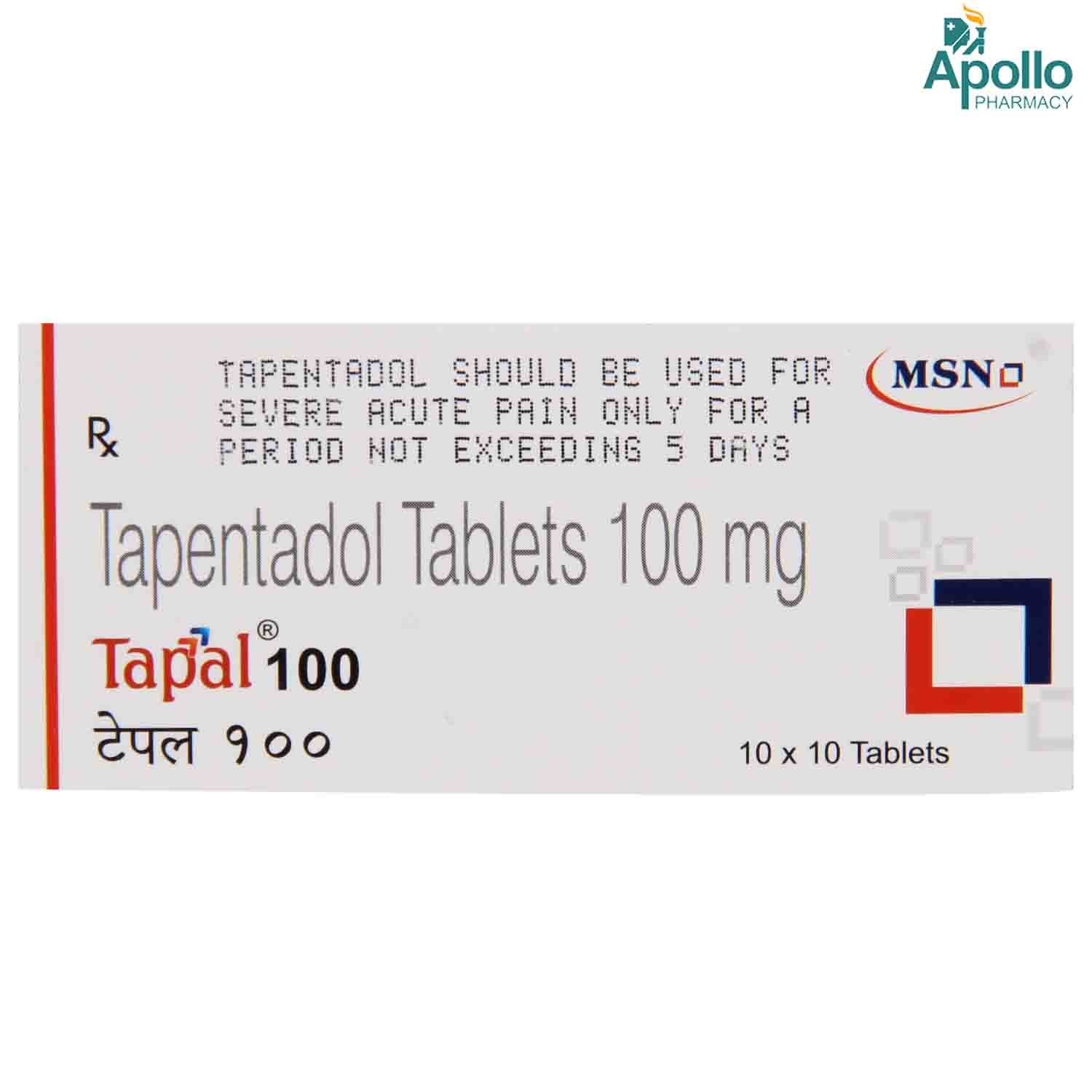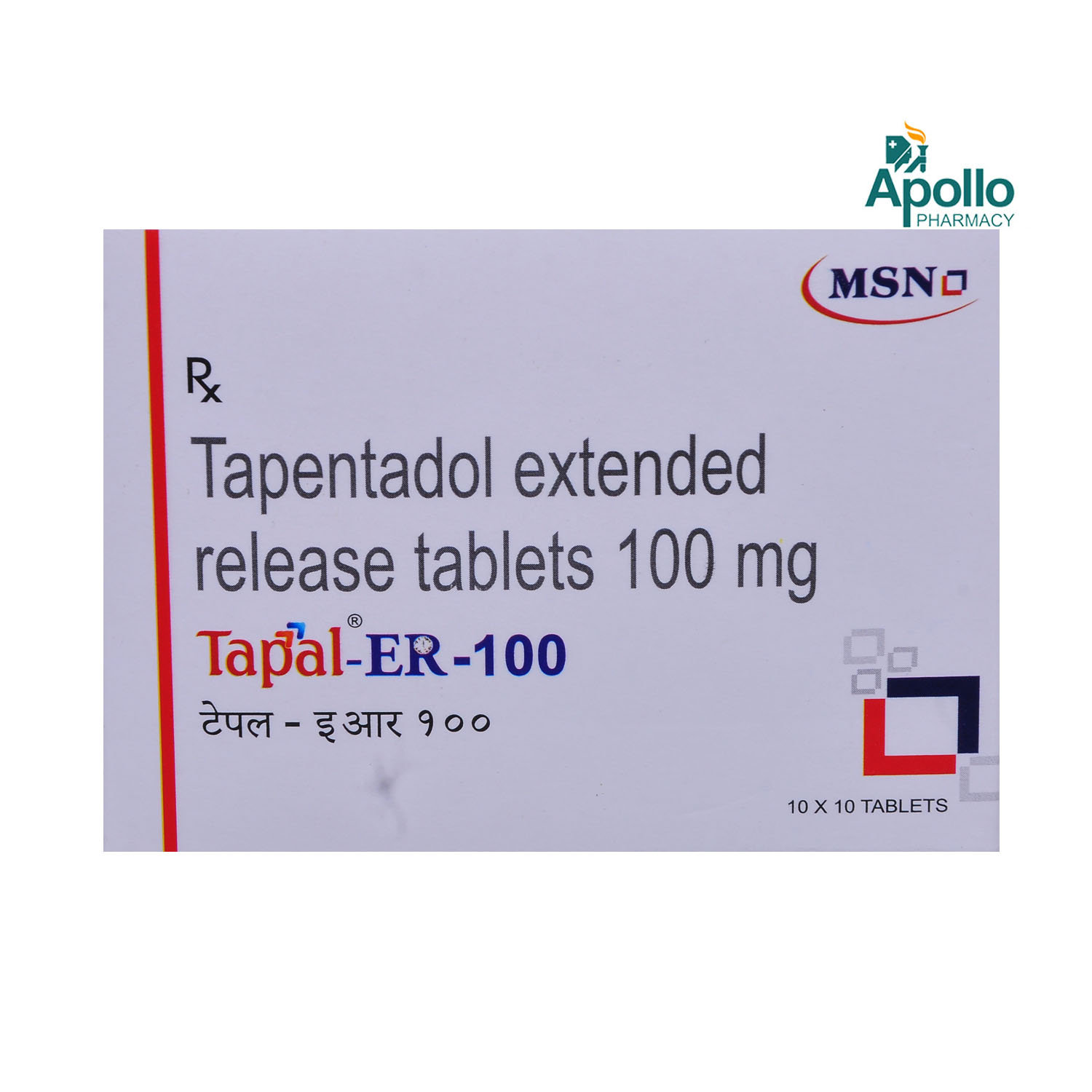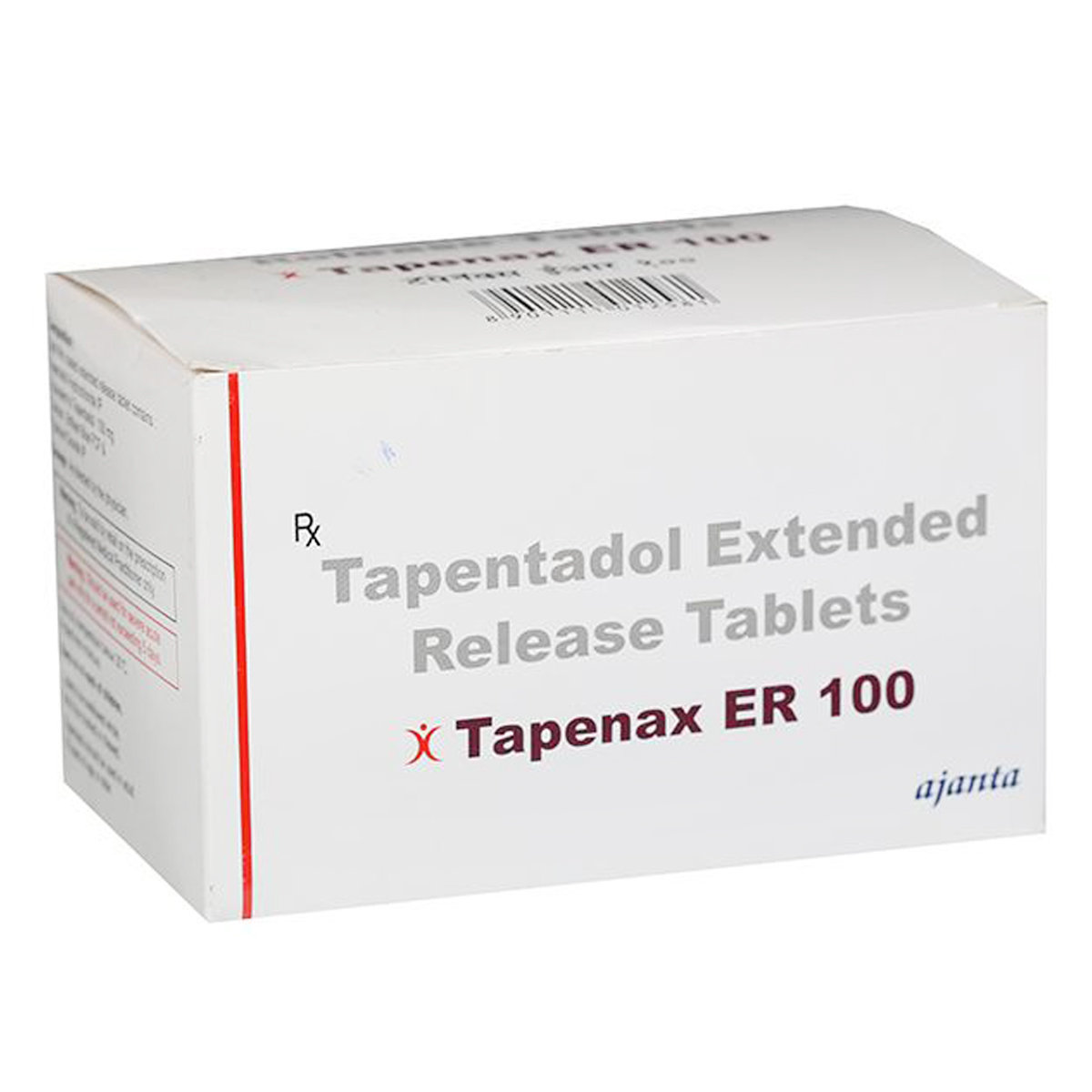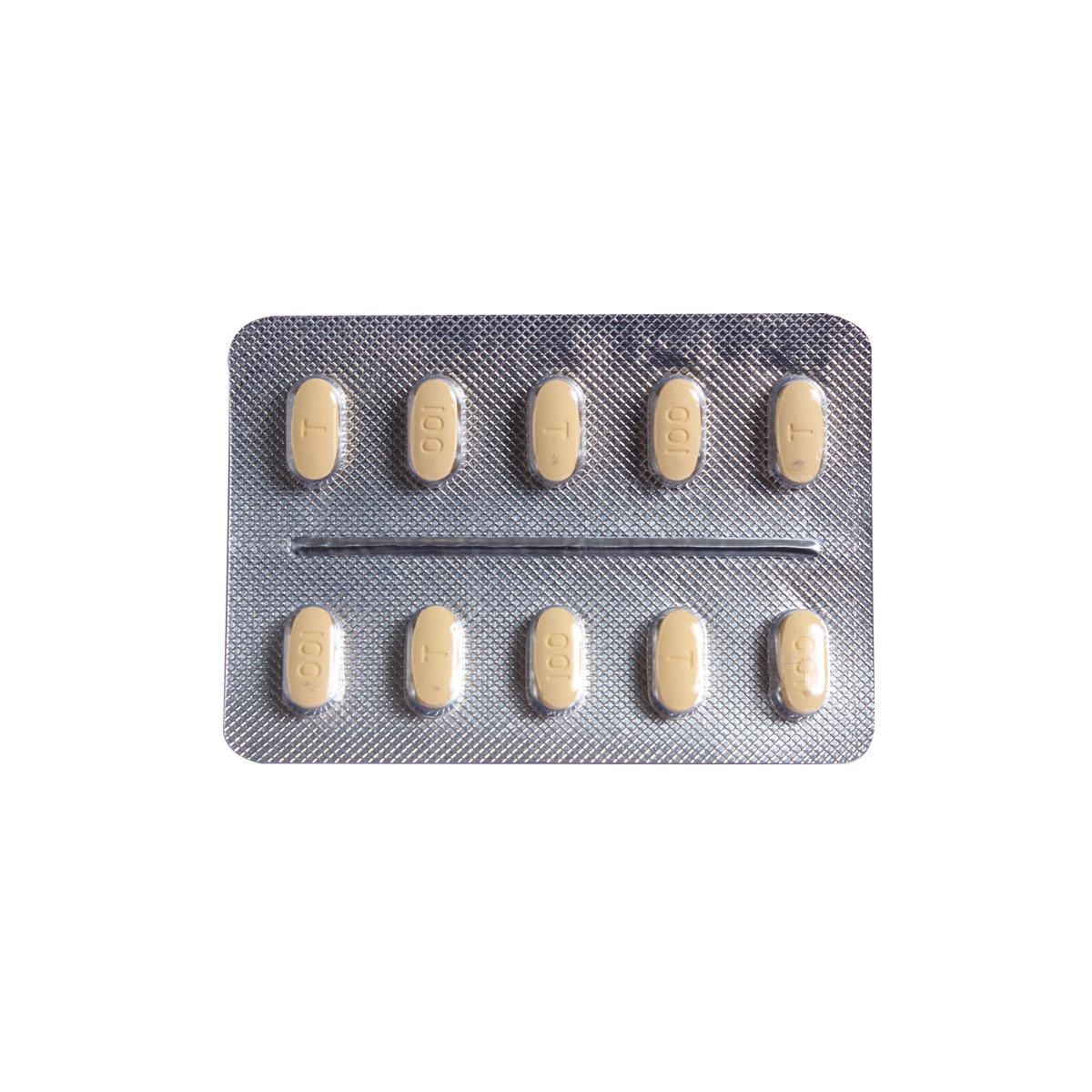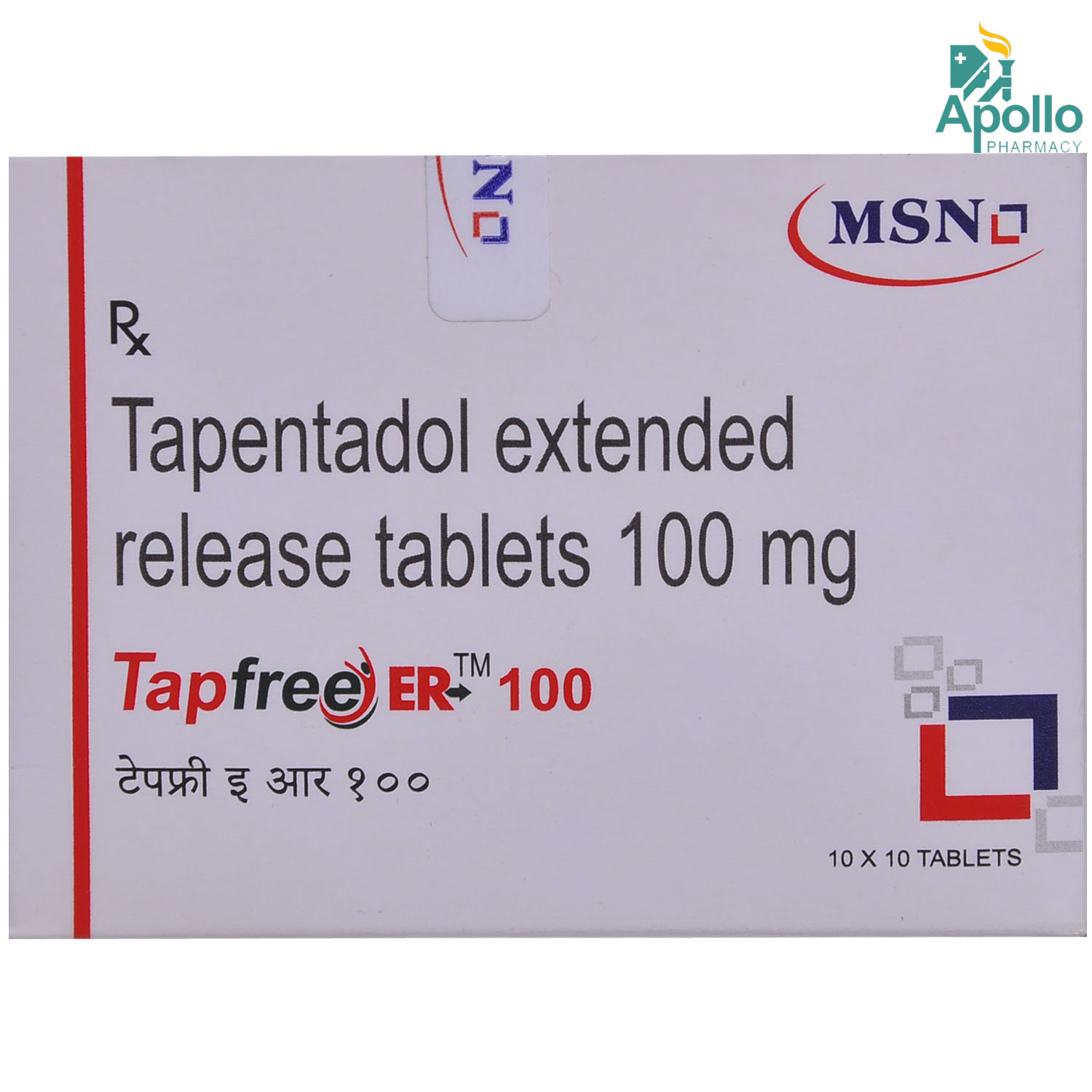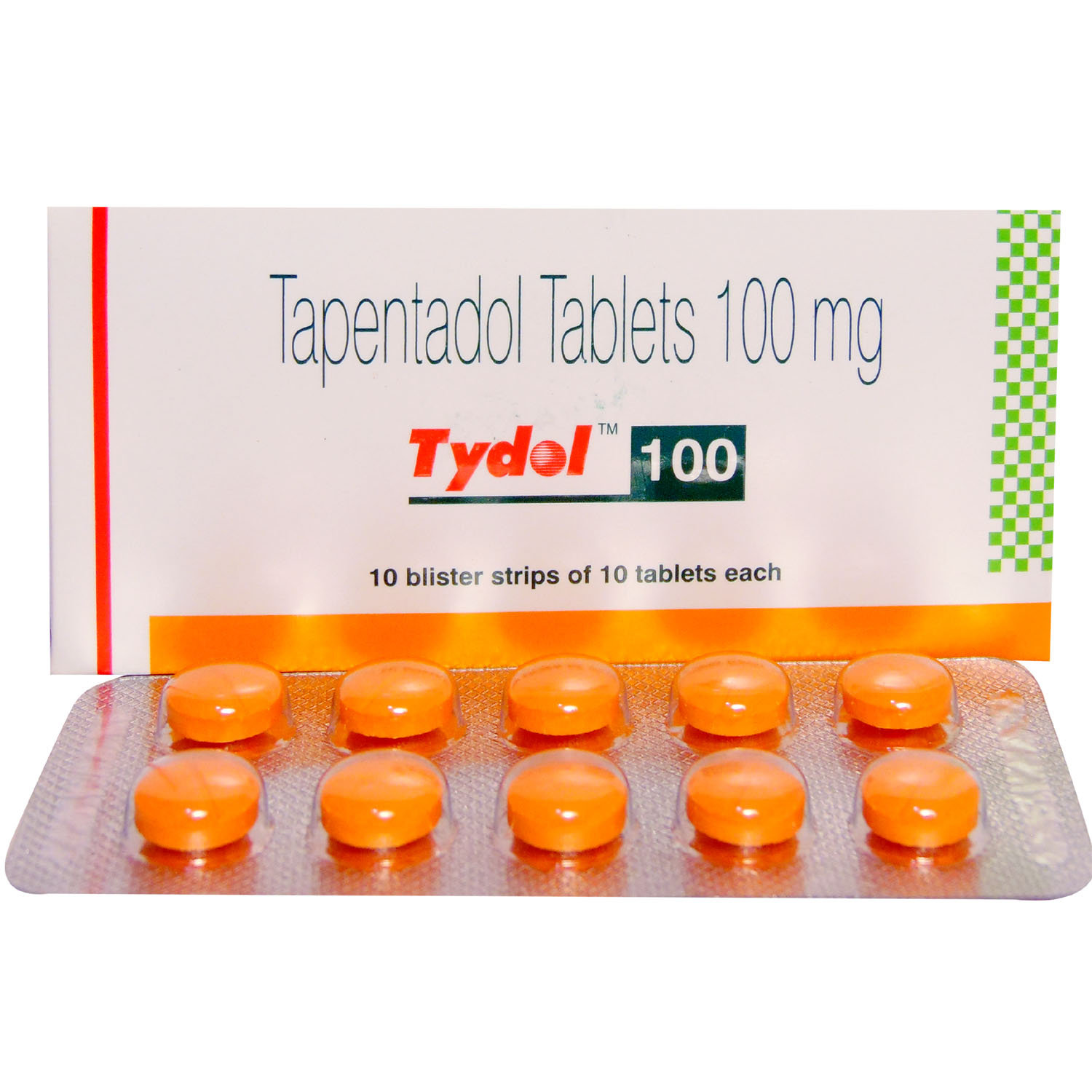Oncodol 100 Tablet 10's


MRP ₹275.5
(Inclusive of all Taxes)
₹41.3 Cashback (15%)
Provide Delivery Location
Online payment accepted
 Prescription drug
Prescription drugWhats That
Composition :
Manufacturer/Marketer :
Consume Type :
Return Policy :
Expires on or after :
About Oncodol 100 Tablet
Oncodol 100 Tablet is an opioid painkiller used to alleviate moderate to severe pain. Pain is an unpleasant sensory and expressive experience caused by real or potential tissue injury.
Oncodol 100 Tablet composed of Tapentadol; it acts directly on opioid receptors in the central nervous system, reducing feelings of pain by interfering with the way neurons convey pain between the brain and the body.
Oncodol 100 Tablet should be taken only if prescribed by the doctor. The possible common side effects of Oncodol 100 Tablet are constipation, nausea, sleepiness, vomiting, tiredness, headache, dizziness, and abdominal pain. Report to your healthcare provider if any of these symptoms persist or worsen.
Inform your doctor if you are allergic to any content of this medicine before taking Oncodol 100 Tablet . If you have asthma or breathing problems, gastrointestinal obstruction, and paralysis of the gut or ileus, please let your doctor know before prescribing Oncodol 100 Tablet to you. Inform your doctor if you are experiencing acute poisoning from alcohol, sleeping pills, pain relievers, or other psychotropic medications. If you are pregnant, planning for pregnancy or breastfeeding, consult your doctor before taking this medicine. Do not discontinue Oncodol 100 Tablet without first consulting your doctor, and your doctor may gradually reduce the dose to avoid withdrawal symptoms.
Uses of Oncodol 100 Tablet
Directions for Use
Medicinal Benefits
Oncodol 100 Tablet is a strong painkiller that belongs to the class of opioids and is used for treating moderate to severe pain. Oncodol 100 Tablet acts directly on opioid receptors in the central nervous system, reducing feelings of pain by interfering with the way neurons convey pain between the brain and the body. Thus, it relieves the pain that occurs due to various medical conditions.
Storage
- Inform your doctor about your constipation symptoms. They may adjust your medication or advise alternative treatments.
- Stay hydrated by drinking sufficient of water (at least 8-10 glasses a day) to help soften stool and promote bowel movements.
- Increase fibre intake by eating foods high in fibre, such as fruits, whole grains, vegetables and legumes, to help bulk up the stool.
- Establish a bowel routine by trying to go to the bathroom at the same time each day to train your bowels.
- Engaging in regular exercise, like walking or yoga, can support in bowel movement stimulation.
- Consult your doctor if constipation persists, and discuss alternative treatments or adjustments to your medication.
- Inform your doctor about dizziness symptoms. They may adjust your medication regimen or prescribe additional medications to manage symptoms.
- Follow your doctor's instructions for taking medication, and take it at the same time every day to minimize dizziness.
- When standing up, do so slowly and carefully to avoid sudden dizziness.
- Avoid making sudden movements, such as turning or bending quickly, which can exacerbate dizziness.
- Drink plenty of water throughout the day to stay hydrated and help alleviate dizziness symptoms.
- If you're feeling dizzy, sit or lie down and rest until the dizziness passes.
- Track when dizziness occurs and any factors that may trigger it, and share this information with your doctor to help manage symptoms.
- Avoid driving or operating machinery or activities that require high focus until you know how the medication affects you.
- Maintain a fixed sleeping schedule, create a relaxing bedtime routine and ensure your sleeping space is comfortable to maximize your sleep quality.
- Limit alcohol and caffeine as these may worsen drowsiness and disturb sleep patterns.
- Drink plenty of water as it helps with alertness and keeps you hydrated and for overall well-being.
- Moderate physical activity can improve energy levels, but avoid intense workouts right before bedtime.
- Hydrate your body: Drink enough water to prevent dehydration and headaches.
- Calm Your Mind: Deep breathing and meditation can help you relax and relieve stress.
- Rest and Recharge: Sleep for 7-8 hours to reduce headache triggers.
- Take rest: lie down in a quiet, dark environment.
- Cold or warm compresses can help reduce tension.
- Stay Upright: Maintain good posture to keep symptoms from getting worse.
- To treat headaches naturally, try acupuncture or massage therapy.
- Over-the-counter pain relievers include acetaminophen and ibuprofen.
- Prescription Assistance: Speak with your doctor about more substantial drug alternatives.
- Severe Headaches: Seek emergency medical assistance for sudden, severe headaches.
- Frequent Headaches: If you get reoccurring headaches, consult your doctor.
- Headaches with Symptoms: Seek medical attention if your headaches include fever, disorientation, or weakness.
- Report the itching to your doctor immediately; they may need to change your medication or dosage.
- Use a cool, damp cloth on the itchy area to help soothe and calm the skin, reducing itching and inflammation.
- Keep your skin hydrated and healthy with gentle, fragrance-free moisturizers.
- Try not to scratch, as this can worsen the itching and irritate your skin.
- If your doctor prescribes, you can take oral medications or apply topical creams or ointments to help relieve itching.
- Track your itching symptoms and follow your doctor's guidance to adjust your treatment plan if needed. If the itching persists, consult your doctor for further advice.
- Always wear loose-fitting clothes which are suitable for your activity.
- Include the diet containing fruits like watermelon, grapes, bananas and green leafy vegetables.
- Drink plenty of water stay hydrated.
- Avoid moving more and staying in hot sun.
- Preventing Vomiting (Before it Happens)
- Take medication exactly as prescribed by your doctor. This can help minimize side effects, including vomiting.
- Having a small meal before taking your medication can help reduce nausea and vomiting.
- Talk to your doctor about taking anti-nausea medication along with your prescribed medication.
- Managing Vomiting (If it Happens)
- Try taking ginger in the form of tea, ale, or candy to help alleviate nausea and vomiting.
- What to Do if Vomiting Persists
- Consult your doctor if vomiting continues or worsens, consult the doctor for guidance on adjusting your medication or additional treatment.
Drug Warnings
If you are hypersensitive or allergic to any of the ingredients in Oncodol 100 Tablet , do not take it. Please do not stop taking Oncodol 100 Tablet without first consulting your doctor, as this may result in withdrawal symptoms. If you are pregnant or nursing, do not take the Oncodol 100 Tablet unless your doctor has recommended it. Oncodol 100 Tablet may cause drowsiness and blurred vision; therefore, drive only if you are awake. Oncodol 100 Tablet is not recommended for children because its safety and effectiveness have not been proven. Drinking alcohol while taking Oncodol 100 Tablet may cause drowsiness and fatigue. If you are having suicidal thoughts, consult a doctor right away.
Drug-Drug Interactions
Drug-Drug Interactions
Login/Sign Up
Using Oncodol 100 Tablet together with Rasagiline might raise serotonin hormone levels in the body, affecting the brain and nerve cells. Increased serotonin hormone can lead to severe side effects.
How to manage the interaction:
Taking Oncodol 100 Tablet with rasagiline is generally avoided, but can be taken only if prescribed by a doctor. However, if you experience confusion, hallucination, seizure, extreme changes in blood pressure, increased heart rate, fever, excessive sweating, blurred vision, muscle spasm or stiffness, tremors, stomach cramps, nausea, vomiting, and diarrhea call a doctor right away. Do not discontinue any medications without consulting a doctor.
Using Oncodol 100 Tablet together with Naltrexone can block the effects of Oncodol 100 Tablet, which reduces its ability to effectively treat your illness.
How to manage the interaction:
Taking Oncodol 100 Tablet with Naltrexone is generally avoided as it can possibly result in an interaction, it can be taken if your doctor has advised it. However, if you experience confusion, hallucination, seizure, extreme changes in blood pressure, increased heart rate, fever, excessive sweating, blurred vision, muscle spasm or stiffness, tremors, stomach cramps, nausea, vomiting, and diarrhoea call a doctor right away. Do not stop using any medications without a doctor’s advice.
Using Oncodol 100 Tablet together with Safinamide can increase the risk of high blood pressure and serotonin syndrome (A condition resulting from the accumulation of high levels of serotonin in the body. Serotonin is especially a mood stabilizer).
How to manage the interaction:
Although using Safinamide and Oncodol 100 Tablet together may cause an interaction, they can be taken if prescribed by a doctor. Consult a doctor if you have symptoms such as confusion, hallucination, fits, blood pressure alteration, increased heart rate, fever, excessive sweating, shivering or shaking, blurred vision, pain in the muscles or stiffness, incoordination, stomach cramps, nausea, vomiting, and loose stools. Inform a doctor if you have recently taken amitriptyline. Do not discontinue any medications without consulting a doctor.
Using Oncodol 100 Tablet together with Isocarboxazid can increase the risk or severity of side effects like decreased breathing rate, irregular heart rhythms, or problems with movement and memory.
How to manage the interaction:
Taking Isocarboxazid with Oncodol 100 Tablet is generally avoided as it can result in an interaction, it can be taken when advised by a doctor. If you experience confusion, hallucination, seizure, extreme changes in blood pressure, increased heart rate, fever, excessive sweating, blurred vision, muscle spasm or stiffness, tremors, stomach cramps, nausea, vomiting, and diarrhea call a doctor right away.
Using Oncodol 100 Tablet together with Linezolid might raise serotonin hormone levels in the body, affecting the brain and nerve cells. Increased serotonin hormone can lead to severe side effects.
How to manage the interaction:
Taking Oncodol 100 Tablet with Linezolid is not recommended, consult a doctor before taking it. If you experience confusion, hallucination, seizure, extreme changes in blood pressure, increased heart rate, fever, excessive sweating, blurred vision, muscle spasm or stiffness, tremors, stomach cramps, nausea, vomiting, and diarrhea call a doctor right away. Do not stop using any medications without talking to a doctor.
Co-administration of Oncodol 100 Tablet together with Selegiline can increase the risk of serotonin syndrome (A condition resulting from the accumulation of high levels of serotonin in the body. Serotonin is a mood stabilizer).
How to manage the interaction:
Co-administration of Selegiline with Oncodol 100 Tablet is generally avoided as it can result in an interaction, but it can be taken if a doctor has advised it. If you experience confusion, hallucination, fits, extreme changes in blood pressure, increased heart rate, fever, excessive sweating, blurred vision, muscle spasm or stiffness, tremors, stomach cramps, nausea, vomiting, and diarrhea call a doctor. Do not discontinue any medications without consulting a doctor.
Taking Oncodol 100 Tablet with Oxycodone can increase the risk or severity of side effects like decreased breathing rate, irregular heart rhythms, or problems with movement and memory.
How to manage the interaction:
Taking Oxycodone with Oncodol 100 Tablet can result in an interaction, it can be taken if your doctor has advised it. Contact a doctor immediately if you experience signs such as drowsiness, lightheadedness, palpitations, confusion, severe weakness, or difficulty breathing. Do not discontinue any medications without consulting a doctor.
Co-administration of Oncodol 100 Tablet and Desvenlafaxine might raise serotonin hormone levels in the body, affecting the brain and nerve cells. Increased serotonin hormone can lead to severe side effects.
How to manage the interaction:
Co-administration of Oncodol 100 Tablet and Desvenlafaxine can lead to an interaction, it can be taken if advised by your doctor. However, if you experience any symptoms like confusion, hallucination, seizure, increased heart rate, fever, excessive sweating, shivering or shaking, blurred vision, muscle spasm or stiffness, tremors, incoordination, stomach cramps, nausea, vomiting, and diarrhea, consult the doctor immediately. Do not stop using any medications without a doctor's advice.
Co-administration of Oncodol 100 Tablet together with Dextromethorphan might raise serotonin hormone levels in the body, affecting the brain and nerve cells. Increased serotonin hormone can lead to severe side effects.
How to manage the interaction:
Although there is a possible interaction between Dextromethorphan and Oncodol 100 Tablet, you can take these medicines together if prescribed by a doctor. However, if you experience symptoms such as seizures (fits), extreme changes in blood pressure, confusion, hallucination, increased heart rate, fever, excessive sweating, shivering or shaking, tremors, incoordination, blurred vision, muscle spasm or stiffness, nausea, vomiting, stomach cramp, and diarrhea, contact a doctor immediately. Do not discontinue any medication without consulting a doctor.
Taking Oncodol 100 Tablet with Potassium clorazepate can increase the risk or severity of side effects like decreased breathing rate, irregular heart rhythms, or problems with movement and memory.
How to manage the interaction:
Taking Potassium clorazepate with Oncodol 100 Tablet can result in an interaction, it can be taken if your doctor has advised it. Contact a doctor immediately if you experience signs such as drowsiness, lightheadedness, palpitations, confusion, severe weakness, or difficulty breathing. Do not discontinue any medications without consulting a doctor.
Drug-Food Interactions
Drug-Food Interactions
Login/Sign Up
Diet & Lifestyle Advise
- Include vitamin B and D-rich foods in your diet.
- Exercising regularly helps to improve overall health and combat pain.
- Rest well and get plenty of rest.
- Taking a warm bath can be very relaxing.
- Avoid smoking and drinking alcohol.
- Meditation and yoga can reduce stress and pain sensitivity and improve coping skills.
- Acupuncture, by stimulating pressure points, can be beneficial.
- Massages with essential oils can help increase circulation.
Side Effects of Oncodol 100 Tablet
- Nausea
- Dizziness
- Vomiting
- Somnolence
- Decreased appetite
- Anxiety
- Confusion
- Hallucination
- Sleep problem
- Abnormal dreams
- Trembling
- Flushing
- Constipation
- Diarrhoea
- Indigestion
- Dry mouth
- Itching
- Increased sweating
- Rash
- Muscle cramps
- Feeling of weakness
- Fatigue
- Feeling of body temperature change
Habit Forming
Therapeutic Class
All Substitutes & Brand Comparisons
RX
Out of StockNot for online saleDUOVOLT ER 100MG TABLET
Ipca Laboratories Ltd
₹138.6
(₹12.47 per unit)
49% CHEAPERRX
Out of StockNot for online saleTapenta 100 mg Tablet 10's
Zuventus Healthcare Ltd
₹200.5
(₹18.05 per unit)
27% CHEAPERRX
Out of StockNot for online saleTapfree-Mono 100 Tablet 10's
Msn Laboratories Pvt Ltd
₹229
(₹20.61 per unit)
16% CHEAPER
Product Substitutes
Drug-Diseases Interactions
Drug-Diseases Interactions
Login/Sign Up
FAQs
Oncodol 100 Tablet acts directly on opioid receptors in the central nervous system, reducing pain by interfering with the way neurons convey pain between the brain and the body.
Usually, no dose modification is required in geriatric patients (those over the age of 65). On the other hand, Tapentadol excretion may be delayed in some people of this age group. In such a case, your doctor may advise you to try an alternative dosage regimen.
Oncodol 100 Tablet is safe when using the lowest effective doses for the shortest duration consistent with individual patient treatment goals.
Do not immediately quit Oncodol 100 Tablet since the quick discontinuation of opioid analgesics has resulted in severe withdrawal symptoms, uncontrolled pain, and suicidal thoughts in physically dependent patients.
Oncodol 100 Tablet contains tapentadol, a Schedule II controlled medication. Controlled medication is a drug or substance that the government strictly regulates due to the possibility of abuse or addiction.
Drug-Drug Interactions Checker List
- DULOXETINE
- DESVENLAFAXINE
- LINEZOLID
- PREGABALIN
- NALOXONE
- OXYCODONE
- DIAZEPAM
- ALPRAZOLAM
Special Advise
- Do not take Oncodol 100 Tablet for longer than it is prescribed because repeatedly using it may make your body dependent on it. If you stop taking Oncodol 100 Tablet suddenly, it can cause withdrawal symptoms such as restlessness and irritability. The doctor will recommend that you reduce your dose slowly to prevent the risk of withdrawal effects.
- Oncodol 100 Tablet is a controlled drug, and you must take a prescription while travelling abroad.
Disease/Condition Glossary
Pain: Pain is a symptom triggered by the nervous system, causing uncomfortable sensations in the body. Pain may be dull or sharp, constant, or may come and go. The tolerance level of pain might vary from person to person. Pain can be generalized (overall body aches) or localized (affecting a specific body area). Pain can be considered a good thing as it helps us know something is wrong in the body and helps diagnose the condition. The common causes of pain include headache, muscle strain, cramps, cuts, bone fractures and arthritis.

Have a query?
Alcohol
Unsafe
Drinking alcohol while taking Oncodol 100 Tablet may aggravate some side effects, such as tiredness and dizziness.
Pregnancy
Caution
Oncodol 100 Tablet should not be used in pregnancy unless clearly necessary. So, if you are pregnant or suspect pregnancy, inform your doctor before taking this medicine. Your doctor will weigh the benefits and potential risks before prescribing Oncodol 100 Tablet .
Breast Feeding
Caution
There is little information available on the use of Oncodol 100 Tablet while breastfeeding. Because it has opioid agonist activity, it is preferable to use another medication, especially if you are nursing a newborn or preterm infant. Newborn infants appear to be especially sensitive to the effects of even low-dose narcotic analgesics.
Driving
Unsafe
Do not drive or operate machinery as Oncodol 100 Tablet may impair the mental or physical abilities.
Liver
Caution
Oncodol 100 Tablet is not recommended in patients with severe liver problems. If you have moderate problems, your doctor will recommend a different dosage regimen. In case of mild liver problems, a dosage adjustment is not required.
Kidney
Caution
A dose adjustment is not required if you have mild to moderate kidney problems. Do not take Oncodol 100 Tablet if you have severe kidney problems.
Children
Caution
Tablet forms of Tapentadol are not suggested for children and adolescents below the age of 18 years.




